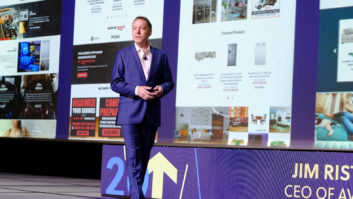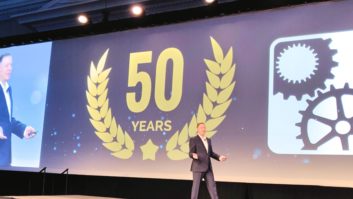Retail sales are lagging… component manufacturers are worried about the future… the country is in recession.
Yes, we have all read the headlines and are all likely thinking similar thoughts: Is this really a recession or a short-lived economic downturn? If it is serious, what changes in my business should I consider making to assure our long-term viability? It seems like the “custom” part of the world is less susceptible to recession — do I open a custom division to diversify my business offering?
Even for the most conservative among us, the question of diversification through “custom” must be examined as we move into a new era of competitiveness and all of us feel the impact of the Internet as a commodities distribution channel. So, for those of you in the process of examining, offered here are some suggested considerations. The intention is not to encourage you toward or away from the creation of a custom division within your company, but rather to simply assist in your deliberation.
Staffing: Regardless of how you are currently structured and staffed, to be successful in the custom design and installation arena your team will need to have specific skill sets. Salespeople are required to be as much about marketing outreach as they are sales, as they need to be able to sell the concept of having a technician go into people’s homes, tear up the house for awhile and then leave the home with new, cool and enjoyable enhancements.
You will also require a capable designer who can actually make these systems work, at least on paper, and you will require competent installers who can drive safely, carry heavy loads, pull wires, hook up basic components, program systems to work and document how the systems really work. Remember that the key to success is having outstanding people in the field who are your primary interface with the client.
Also required is a project management component to continue working with the builders, interior designers, architects, electricians and homeowners to make certain that the project is still moving forward and on schedule. Builders will give you the benefit of the doubt for one, maybe two projects if you are impacting the construction schedule. If you are, don’t expect to hear any feedback from the builders, but don’t expect anymore work either.
Service: An attitude of 24/7 service is a given in the custom installation industry. Our clients like to get a hold of us on Sunday just two hours before the big game to let us know we have an hour to get their system up and running again. They need to be able to get in touch with an appropriate service person and receive service that meets or exceeds their expectation. Whether this is accomplished through a service, mechanically with a phone and paging system, or by having staff on call, the response demand time for custom is critical to assure future referrals.
Remember that if you choose not to offer 24/7 service, you are simply not being competitive in today’s custom installation market and your referral business will be negatively impacted.
Materials: Isn’t “One to show and one to go” a neat and easy way to manage inventory? I know that most of you have more sophisticated ways to manage your inventory levels and materials flow, but the custom world adds a whole new twist to the mix. We often sell and begin installing systems months before the home is completed. This means that some of what we are selling is speculative, some of it is antiquated by the time the homeowner moves into their home and much of it is just-in-time materials management.
Unfortunately, our world of consumer electronics is not really adept at just-in-time inventory management, so sometimes we win and sometimes we look like fools to our clients. What you will require is a careful balance between new and old inventory, quick and responsive systems within your company and understanding vendors.
Frankly, some of the “Old World” vendors will not be capable of helping you be successful in the custom installation arena and you may be forced to change who you do business with. Talk with current custom installation firms and find out who is responsive to this relatively new business model and who is not.
Capital investment: Vans, tools, CAD stations, pre-kitting facilities, marketing materials, accounting software investments and back-room offices are among the investments required to create a capable custom design and installation firm.
If you are currently in retail, here is the best comparison I can offer: Today, almost all of your efforts lead up to and end with the transaction at the cash register. You buy the product and put it on a shelf. You hire and train your staff. You build an exciting and effective showroom. You advertise and open your doors. Then the people flock in, pick up what they want and take it to the cash register where you see them for the last time.
In custom, the build-up is different and the “cash register” experience is the real beginning of the customer’s experience with our company. From this point forward we will be living with them until the work is completed, and in most cases the relationship will go on for years to come, as they trust us for upgrades and repairs to their system. Your business infrastructure needs to be ready to handle the ever-increasing service demand while still reaching out to new clients.
Cash flow: Talk about a major shift. Remember the cash register in the section above? Well, in custom, we have payment programs that correspond to the progress of the work. Your accounting people need to be fully prepared and on-board with this new and exciting way to do business. They need to realize that a $50,000 deposit is actually a liability on the books, and they can’t count on that money to grow the business or pay old invoices as there are already commitments made that the deposit will be required to pay for.
One of the most frequent mistakes made in the custom installation industry is when design/installation firms leverage system deposits for company growth activities. This works fine while business grows enthusiastically and no competition exists. But introduce either a flat economic environment or a competitor that squeezes margins, and the happy days are over for the company that has spent the deposit and still has equipment to buy for a customer.
Logistics: Can your installation crew get into your facility and on the road from your shop by 6 a.m.? Do they have a way to return late at night, get into your facility and restock the van for the next day? Can customers get a hold of your company on a Sunday afternoon? Do you have the facility to build all of your customers’ systems in-house before they are due to ship? How are your installation crews going to communicate to the office while they are out in the field?
Yes, the logistics of running a custom installation business are complex and need to be well planned and executed. As a general rule, attend most to the logistics that will prevent your customers from seeing your mishaps while you are going through your learning curve. It’s just less embarrassing that way.
Business process: You will likely have parallel marketing, materials, sales, training, service and business management processes taking place in a diversified business. Just be ready for them and plan for them.
As I mentioned at the outset, this list is not intended to dissuade you from exploring the custom installation arena as a diversification strategy for your existing company. It is simply intended to be a preparatory list to help in your decision-making process. Like anything other significant decisions you have considered for your business over the years, don’t take these lightly.
Oh, by the way, if you are looking for a great resource to help explore the custom installation industry, plan to attend one or more of the upcoming CEDIA events. CEDIA has a number of regional events scheduled around the globe this year, and CEDIA Expo will be held in Minneapolis in September 2002. For more information, visit www.cedia.org.








